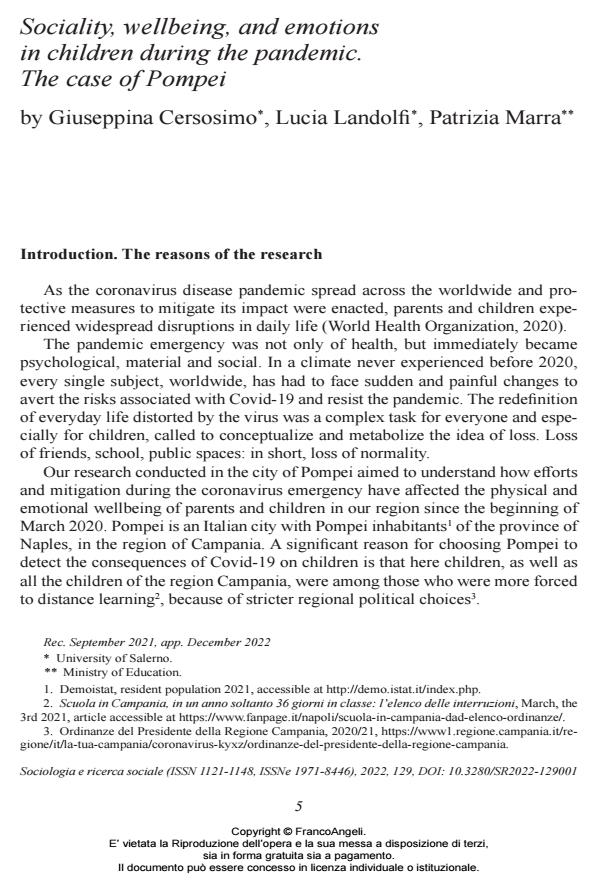Sociality, wellbeing, and emotions in children during the pandemic. The case of Pompei
Titolo Rivista SOCIOLOGIA E RICERCA SOCIALE
Autori/Curatori Giuseppina Cersosimo, Lucia Landolfi, Patrizia Marra
Anno di pubblicazione 2023 Fascicolo 2022/129
Lingua Inglese Numero pagine 28 P. 5-32 Dimensione file 582 KB
DOI 10.3280/SR2022-129001
Il DOI è il codice a barre della proprietà intellettuale: per saperne di più
clicca qui
Qui sotto puoi vedere in anteprima la prima pagina di questo articolo.
Se questo articolo ti interessa, lo puoi acquistare (e scaricare in formato pdf) seguendo le facili indicazioni per acquistare il download credit. Acquista Download Credits per scaricare questo Articolo in formato PDF

FrancoAngeli è membro della Publishers International Linking Association, Inc (PILA)associazione indipendente e non profit per facilitare (attraverso i servizi tecnologici implementati da CrossRef.org) l’accesso degli studiosi ai contenuti digitali nelle pubblicazioni professionali e scientifiche
Our objective in this work was to show how the pandemic and mitigation efforts affected the physical and emotional well-being of parents and children in our research context through early March of 2020. The methods used in our research include the analysis of children’s drawings, as well as interviews with teachers and family members. During this period of the restriction, our research verified the presence of reduced physical activities, eating disorders, increased requests for and reliance on video games, and screen time for entertainment, all fears related to isolation, restlessness dreams, emotional withdrawal, and sadness/depression.
Giuseppina Cersosimo, Lucia Landolfi, Patrizia Marra, Sociality, wellbeing, and emotions in children during the pandemic. The case of Pompei in "SOCIOLOGIA E RICERCA SOCIALE " 129/2022, pp 5-32, DOI: 10.3280/SR2022-129001